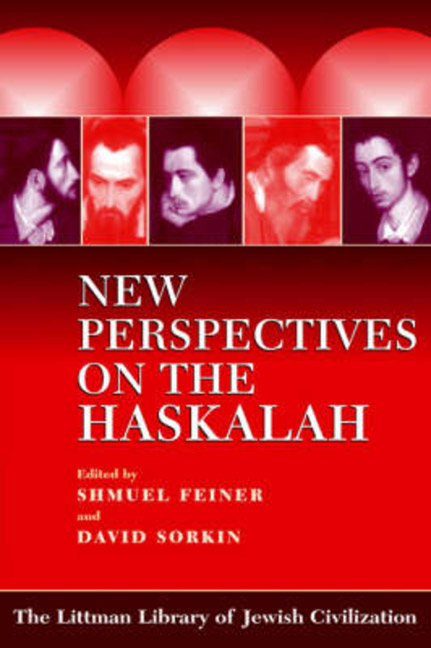Book contents
- Frontmatter
- Preface
- Contents
- Note on Transliteration
- Introduction
- 1 The Early Haskalah
- 2 Naphtali Herz Wessely and the Cultural Dislocations of an Eighteenth-Century Maskil
- 3 Enlightenment Values, Jewish Ethics: The Haskalah's Transformation of the Traditional Musar Genre
- 4 Was there a ‘Haskalah’ in England? Reconsidering an Old Question
- 5 Strategy and Ruse in the Haskalah of Mendel Lefin of Satanow
- 6 The Struggle of the Mitnagedim and Maskilim against Hasidism: Rabbi Jacob Emden and Judah Leib Mieses
- 7 Magic and Miracle-Workers in the Literature of the Haskalah
- 8 Portrait of the Maskil as a Young Man
- 9 Reality and its Refraction in Descriptions of Women in Haskalah Fiction
- 10 Enlightened Rabbis as Reformers in Russian Jewish Society
- 11 Towards a Historical Definition of the Haskalah
- Glossary
- Notes on Contributors
- Bibliography
- Index
1 - The Early Haskalah
- Frontmatter
- Preface
- Contents
- Note on Transliteration
- Introduction
- 1 The Early Haskalah
- 2 Naphtali Herz Wessely and the Cultural Dislocations of an Eighteenth-Century Maskil
- 3 Enlightenment Values, Jewish Ethics: The Haskalah's Transformation of the Traditional Musar Genre
- 4 Was there a ‘Haskalah’ in England? Reconsidering an Old Question
- 5 Strategy and Ruse in the Haskalah of Mendel Lefin of Satanow
- 6 The Struggle of the Mitnagedim and Maskilim against Hasidism: Rabbi Jacob Emden and Judah Leib Mieses
- 7 Magic and Miracle-Workers in the Literature of the Haskalah
- 8 Portrait of the Maskil as a Young Man
- 9 Reality and its Refraction in Descriptions of Women in Haskalah Fiction
- 10 Enlightened Rabbis as Reformers in Russian Jewish Society
- 11 Towards a Historical Definition of the Haskalah
- Glossary
- Notes on Contributors
- Bibliography
- Index
Summary
HASKALAH scholarship has so overwhelmingly emphasized the period after 1770 that prior developments and their exponents have long been relegated to the respective statuses of anticipations and precursors. Since the nature of a movement remains opaque if its antecedents are not properly understood, it is time for us to scrutinize anew the period 1720–1770. We must ask whether it contained mere anticipations or in fact constituted a cultural phase that warrants recognition. If we extend to the early Haskalah the sort of treatment which scholarship on the European Enlightenment has given to the ‘early Enlightenment’ or Frühaufklärung, we might then need to consider the possibility that it represented a cultural entity which is able to cast new light on the Haskalah after 1770.
To examine the developments prior to 1770 it is necessary to stop reading backwards from the nineteenth and twentieth centuries—to forgo the usual questions about emancipation and assimilation, modernization and the reform of Jewish society —and instead to begin reading forwards from the eighteenth century, enquiring about the relationship of early eighteenth-century thinkers to the cultural configuration of their time. What were these thinkers attempting to do with the available culture of their own day? Which aspects of medieval and early modern Jewish thought did they accept and which trends of thought did they reject? What was their attitude to recent developments in European philosophy and science?
If we begin with these questions, it is apparent that the early Haskalah may be defined as an effort to revise baroque Judaism or the Ashkenazi culture of early modern Europe. That Judaism had four defining characteristics. Talmud study was primary, with the method of study (pilpul) increasingly if not predominantly casuist. Kabbalah was cultivated to such an extent that it permeated the understanding of Judaism and became the main supporting discipline to Talmud. Medieval Jewish philosophy was ostracized, while medieval biblical exegesis, and the study of Hebrew language and grammar and of the Bible as an independent subject, suffered a neglect bordering on ostracism. Finally, a glaring cultural insularity had led to disdain for the study of foreign languages and science, rendering them not merely superfluous but highly suspect.
- Type
- Chapter
- Information
- New Perspectives on the Haskalah , pp. 9 - 26Publisher: Liverpool University PressPrint publication year: 2001

